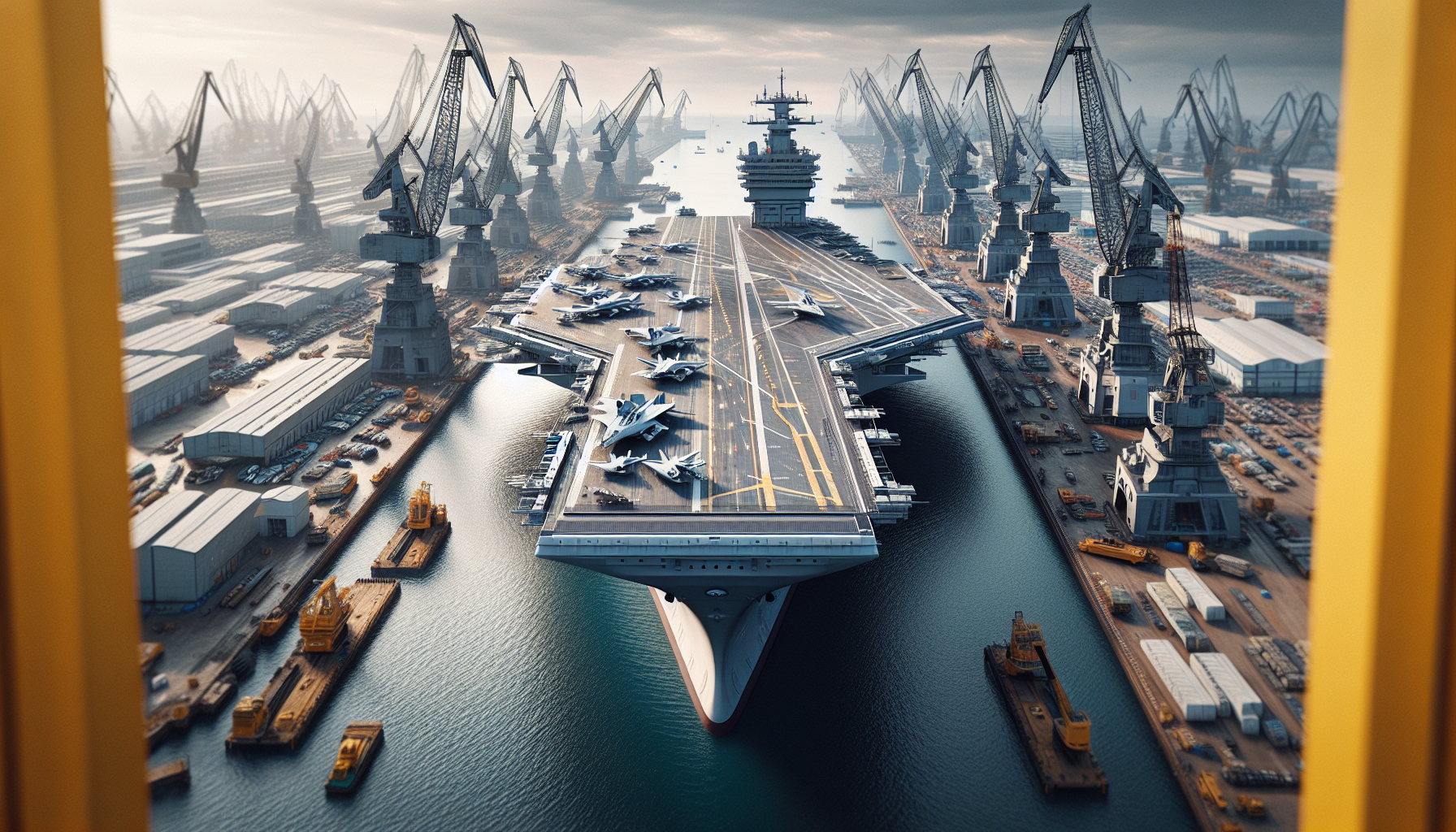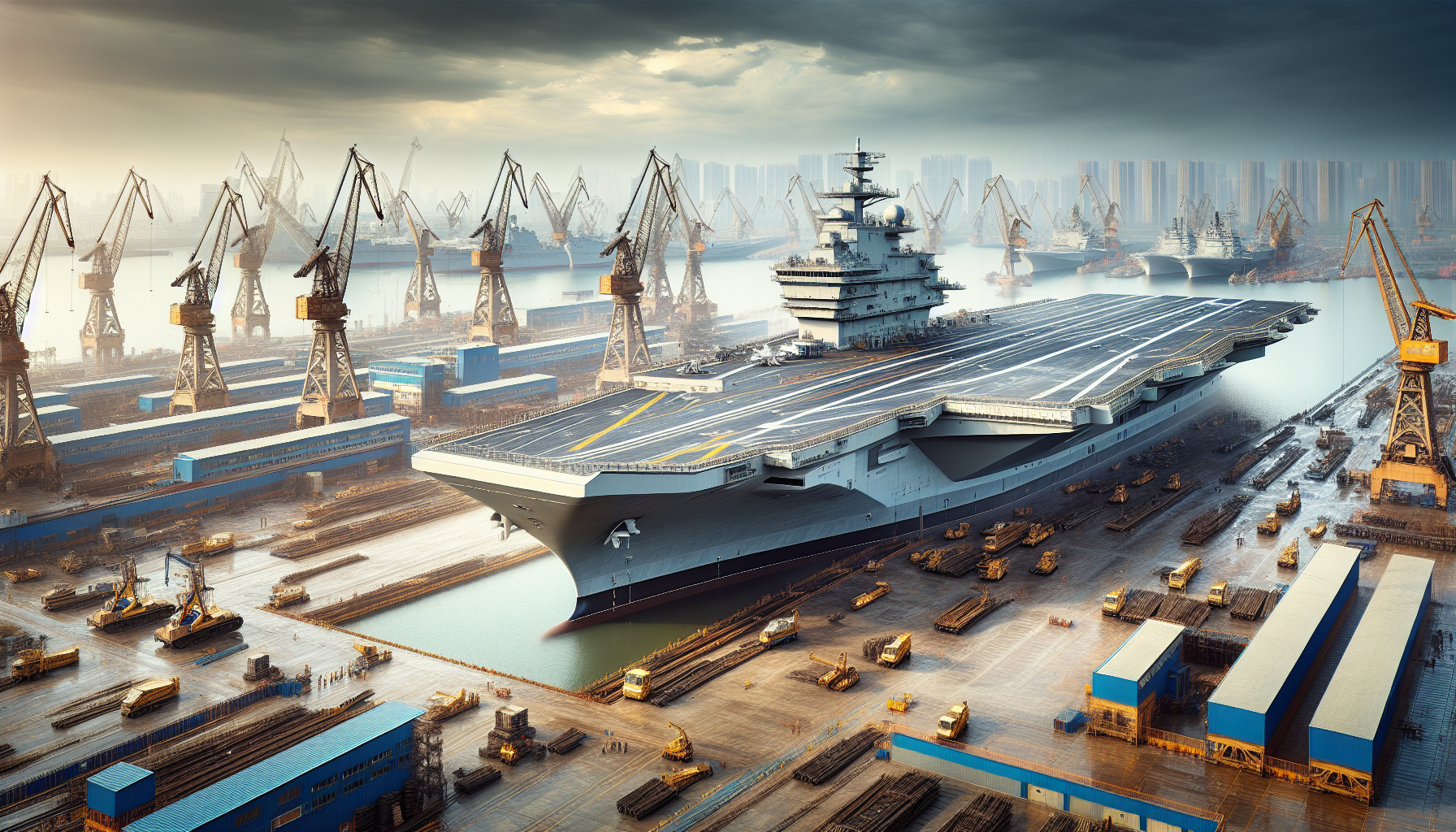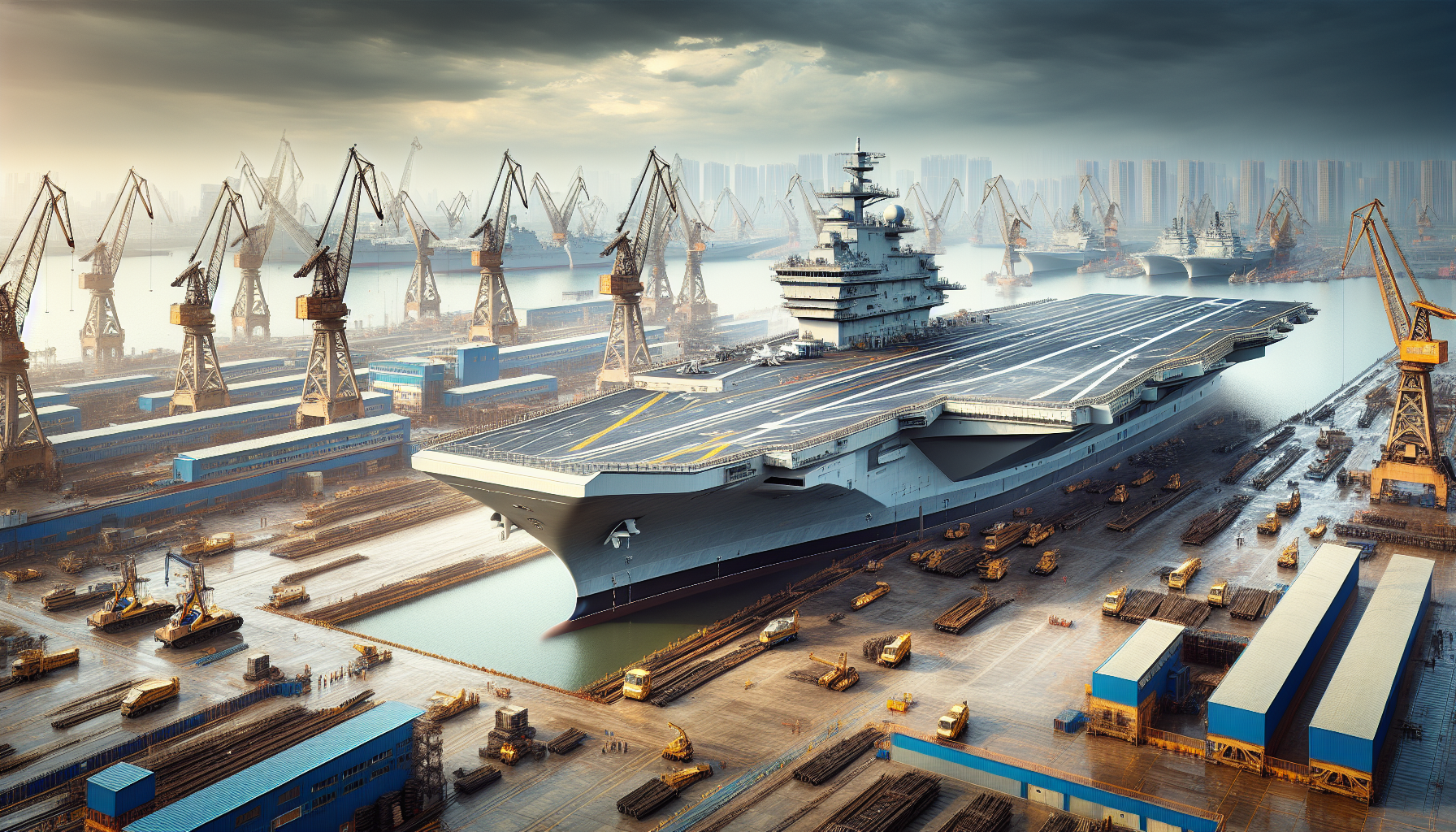The Navy has made a substantial request for 19 new ships in its fiscal year 2026 budget, reflecting an urgent response to perceived deficiencies in naval capability. This notable increase signifies a strategic shift; however, it also exposes critical shortcomings in the current shipbuilding process. Underlying issues, such as delays in major programs like the Virginia and Columbia class submarines and escalating costs, raise significant concerns about the feasibility of achieving a robust 350-ship navy.
In this analysis, the complexities surrounding the Navy’s shipbuilding agenda will be explored, centering on budget considerations and the operational capacity of the shipyards. Moreover, the article will investigate the broader implications of recruitment challenges and technological advancements, such as drone ships, that could influence future naval strategy. By addressing these facets, a comprehensive understanding of the Navy’s ambitious ship procurement request can be attained, alongside an evaluation of its potential for successful execution.
Overview of the Navy’s Shipbuilding Request
Summary of Fiscal Year 2026 Budget Increase
The Fiscal Year (FY) 2026 budget request from the Navy marks a pivotal moment in the U.S. maritime strategy, reflecting an ambitious plan to procure 19 new ships. This request represents a significant increase when juxtaposed against historical funding levels and emphasizes the urgent need to modernize the fleet in response to evolving global threats. Military leaders have articulated a growing sense of urgency regarding the readiness and capability gaps within the Navy, compelling them to propose such a large-scale initiative. The request portrays a dual commitment to sustaining and enhancing the existing operational edge of the Navy while confronting the challenges posed by emerging adversaries.
Historical Context of Navy Shipbuilding Requests
The trajectory of Navy shipbuilding requests over the past several decades reveals a pattern of fluctuating priorities often dictated by geopolitical circumstances and budgetary constraints. In earlier periods, such as the Cold War, the Navy experienced substantial investments aimed at achieving dominance at sea. However, post-9/11 military engagements have diverted funding to other emergencies, resulting in a stagnant fleet size and insufficient modernization. The recent budget increase seeks to break this cycle, reinforcing the notion that a robust shipbuilding program is essential for national security, especially in an era marked by increasing competition from global naval powers.
Significance of Procurement of 19 New Ships
The procurement of 19 new vessels encapsulates more than mere numerical expansion; it signifies a strategic recalibration within the Navy’s operational framework. New ships enhance not only the quantitative capacity of the fleet but also its qualitative capabilities through the integration of advanced technologies and systems. Successful procurement in FY 2026 could lay the groundwork for a more formidable naval presence and ascertain American interests on the global stage. Yet this ambitious goal raises questions about the Navy’s ability to execute such a plan amidst existing production challenges and resource limitations.
Current Status of the Navy’s Shipbuilding Efforts
Analysis of the Virginia-class Submarine Program
The Virginia-class submarine program, critical to U.S. undersea warfare capabilities, has faced its share of hurdles. While the class has benefited from technological advancements and a modular construction approach, production timelines have been extended, often due to labor shortages and logistical delays. You would note that these issues exacerbate the Navy’s broader mission of maintaining a competitive edge in submarine warfare against adversaries like China and Russia. Furthermore, the ongoing operational demand for these submarines underscores the need for expedited production and efficient resource allocation.
Progress and Delays in the Columbia-class Submarine Program
The Columbia-class program, intended to replace the aging Ohio-class ballistic missile submarines, has encountered significant delays, attributed to both engineering complexities and budgetary pressures. You might examine how these delays not only affect the timeline for introducing these crucial vessels but also have broader implications for deterrence strategies. With each postponed delivery, the U.S. risks not only its nuclear deterrent capabilities but also its strategic posture in an increasingly multipolar world.
Comparison with Previous Shipbuilding Orders
In comparing the current shipbuilding requests with previous orders, it becomes evident that the Navy’s recent ambitions exceed those of the last decade, which was characterized by reduced orders and extended timelines. The focus on a large-scale procurement initiative in FY 2026 contrasts starkly with the post-financial crisis period, during which budget constraints severely limited shipbuilding activities. By assessing these trends, you foster a deeper understanding of the Navy’s evolving strategic needs and the imperatives driving the latest requests.
Challenges Facing the Navy’s Shipbuilding Goals

Underlying Issues in Shipyard Capacity
You must recognize that the challenges associated with Navy shipbuilding extend beyond mere financial considerations; underlying issues in shipyard capacity play a critical role. Aging infrastructure, labor shortages, and substantial workforce attrition have diminished the Navy’s shipbuilding capacity. As shipyards struggle to meet demands due to these structural limitations, effective planning becomes essential to prevent delays that could jeopardize national security.
Impact of Rising Costs on Ship Production
Rising costs associated with ship production present a formidable challenge. As you delve into this issue, consider how inflation, increased material costs, and labor expenses contribute to the rising price of shipbuilding by complicating project budgets and schedules. The financial implications of addressing these challenges require strategic foresight and effective management to ensure fiscal responsibility while meeting national defense needs.
Supply Chain Problems Affecting Shipbuilding
In a landscape shaped by global interconnectedness, you have to consider the impact of supply chain problems on Navy shipbuilding efforts. Disruptions stemming from international crises, such as the COVID-19 pandemic, have exposed vulnerabilities in the logistics of procuring essential materials and components. As these supply chain issues persist, they imperil the timelines for ship installations and maintenance, ultimately undermining mission readiness.
Impact of Budget Allocation on Shipbuilding
How Increased Funding Affects Procurement
The allocation of increased funding in the Navy’s FY 2026 budget request will have a multifaceted impact on procurement efforts. You will find that more resources enable the Navy to expedite the process of contracting and acquiring new ships while simultaneously allowing for investments in advanced technologies and systems. However, without a coherent strategy for utilizing these funds effectively, the desired outcomes may not be achieved.
Distribution of Budget Across Different Programs
The distribution of budgetary resources across various shipbuilding programs is crucial for the Navy to adapt to emerging defense challenges. An equitable allocation prioritizing multi-domain capabilities will empower the Navy to maintain strategic superiority. You should consider how this distribution reflects overarching defense priorities, strategically guiding investments into the most pressing areas of need without risking areas of potential vulnerability.
Long-term Financial Implications for Shipbuilding
In contemplating the long-term financial implications of the proposed budget, you must weigh the benefits of increased investment in shipbuilding against the potential risks of budgetary adjustments and legislative constraints. A sustained commitment to ship construction is essential for maintaining a robust naval presence, yet it requires careful fiscal planning and stakeholder cooperation to ensure continuity amid fluctuating political winds.
Navy’s 350-Ship Objective: Reality or Fantasy?

Goals Versus Current Capabilities
As you analyze the Navy’s 350-ship objective, you must ascertain the feasibility of this vision relative to current capabilities. The ambitious goal proposes a fleet size that far exceeds present figures, leading to skepticism among defense analysts regarding its practicality. Challenges ranging from production delays to resource availability must be scrutinized to gauge the likelihood of achieving this target.
Future Projections for Fleet Size
Future projections for fleet size are intrinsically linked to current procurement strategies, technological advancements, and geopolitical realities. You should explore how strategic assessments of potential threats influence these forecasts and how the Navy must balance innovation with traditional naval functions while sufficing multiple operational demands.
Strategic Importance of a Larger Navy
The strategic importance of a larger Navy cannot be overstated. A more extensive fleet will bolster deterrent capabilities and enhance the U.S. military’s ability to project power globally. You are encouraged to consider how achieving fleet growth isn’t simply a numbers game; it represents a crucial element of national defense strategy against a backdrop of rising state and non-state challenges in the maritime domain.
Recruitment and Workforce Issues in Shipbuilding
Current State of Navy Recruitment Efforts
The current state of Navy recruitment efforts is a vital component influencing the future of shipbuilding. With an increasing need for skilled personnel, you must analyze how current recruitment strategies may mirror or differ from broader societal trends. Challenges such as competition from the private sector and evolving workforce expectations necessitate innovative approaches to attract qualified candidates.
Connection Between Workforce Shortages and Shipbuilding
Understanding the linkage between workforce shortages and shipbuilding requires you to recognize the multifaceted nature of the problem. If shipyards lack an adequate number of skilled workers, production timelines will inevitably falter. Your analysis should reflect on the implications of this workforce crisis for maintaining operational inventories and enabling timely delivery of new vessels.
Strategies to Attract Talent to Shipyards
To address these critical workforce shortages, the Navy must adopt targeted strategies to attract talent to its shipyards. As you explore potential solutions, consider the effectiveness of educational partnerships, initiatives to promote vocational training, and comprehensive career development programs. These efforts can provide pathways for individuals to pursue rewarding careers in naval shipbuilding while enhancing overall workforce readiness.
Emerging Technologies in Naval Shipbuilding

Introduction of Drone Ships and Unmanned Systems
The introduction of drone ships and unmanned systems marks a transformative shift in naval capabilities. The integration of these technologies represents a response to the increasing complexity of modern warfare, wherein the Navy must adapt to the challenges posed by adversaries employing asymmetric tactics. You should consider how the Navy can leverage these advancements to enhance situational awareness and operational efficiency.
Potential Benefits of Advanced Technologies
The potential benefits of advanced technologies in shipbuilding extend beyond enhanced operational capabilities; they may also significantly reduce costs and expedite the production process. As you delve into this topic, consider how risk mitigation through unmanned systems can lead to safer operations and greater expeditionary flexibility. These innovations signal a path to modernization and increased readiness.
Challenges in Integrating New Technologies into Existing Programs
Despite the promise of emerging technologies, integrating these systems into existing programs presents significant challenges. You must evaluate the complexities of retrofitting current vessels, the need for bespoke training, and the potential challenges in interoperability with legacy systems. This analysis will evoke a sense of the strategic calculus necessary to navigate these convolutions effectively.
Comparative Analysis with Other Navies
How the U.S. Navy Stacks Up Against Global Rivals
To comprehend the Navy’s position in a global context, a comparative analysis with rival navies is imperative. You would need to dissect specific metrics—fleet size, technological advancement, and operational readiness—marking how the U.S. Navy fares against potential adversaries. This comparison will contextualize the Navy’s strategic objectives against global maritime developments.
Shipbuilding Strategies of Other Nations
Exploring the shipbuilding strategies of other nations offers insights into alternative models of naval construction, which can inform U.S. approaches. By analyzing countries like China and Russia, which have accelerated their shipbuilding efforts, you can reflect on the implications these strategies have on U.S. military priorities and planning.
Lessons Learned from International Shipbuilding Efforts
As the Navy evaluates its shipbuilding priorities, lessons learned from international efforts are invaluable. You must assess how collaboration, technology transfer initiatives, and multinational partnerships can enhance the U.S. shipbuilding landscape. Continuous learning from global counterparts could fortify the Navy’s competitive edge, ensuring it remains agile and effective.
Legislative and Political Influences on Shipbuilding
Role of Congress in Navy Funding Decisions
The role of Congress in shaping Navy funding decisions is a critical aspect of the shipbuilding landscape. You should delve into how legislative initiatives influence budget allocations, the importance of bipartisan support, and how changes in political leadership may shift priorities. Understanding these dynamics will provide insights into the complex nature of defense appropriations.
Political Support for Shipbuilding Initiatives
Political support for shipbuilding initiatives serves as a barometer for the Navy’s ability to attract sustained funding. Your analysis should incorporate how regional interests, advocacy from defense contractors, and public sentiment toward military spending can sway decisions. Strengthening political backing for shipbuilding efforts will be essential for long-term success.
Impact of Public Opinion on Defense Spending
Public opinion plays a significant role in shaping defense spending priorities, including shipbuilding. By examining how perceptions of military readiness, economic competitiveness, and international obligations influence public sentiment, you can demonstrate the intricate relationship between societal values and government spending decisions.
Conclusion
Recap of Key Takeaways on Navy’s Shipbuilding Efforts
The Navy’s shipbuilding endeavors are at a crossroads, with ambitious goals set against a backdrop of considerable challenges. Increased funding, workforce issues, and procurement delays are entwined in this narrative. As you reflect on the key takeaways, consider how various factors intertwine to shape the future landscape of naval construction.
Final Thoughts on Feasibility of Proposed Ship Construction
While the proposal to build 19 new ships within the FY 2026 framework is commendable, you must contend with questions of feasibility. The synthesis of technological, logistical, financial, and political considerations will ultimately determine the Navy’s success in modernizing its fleet.
Call to Action for Stakeholders in Defense Sector
To propel the Navy toward achieving its shipbuilding goals, stakeholders across the defense sector must engage in collaborative dialogues focusing on pragmatic solutions. By fostering partnerships, enhancing workforce development, and streamlining procurement processes, you can contribute to a stronger, more capable Navy poised to meet future challenges.
